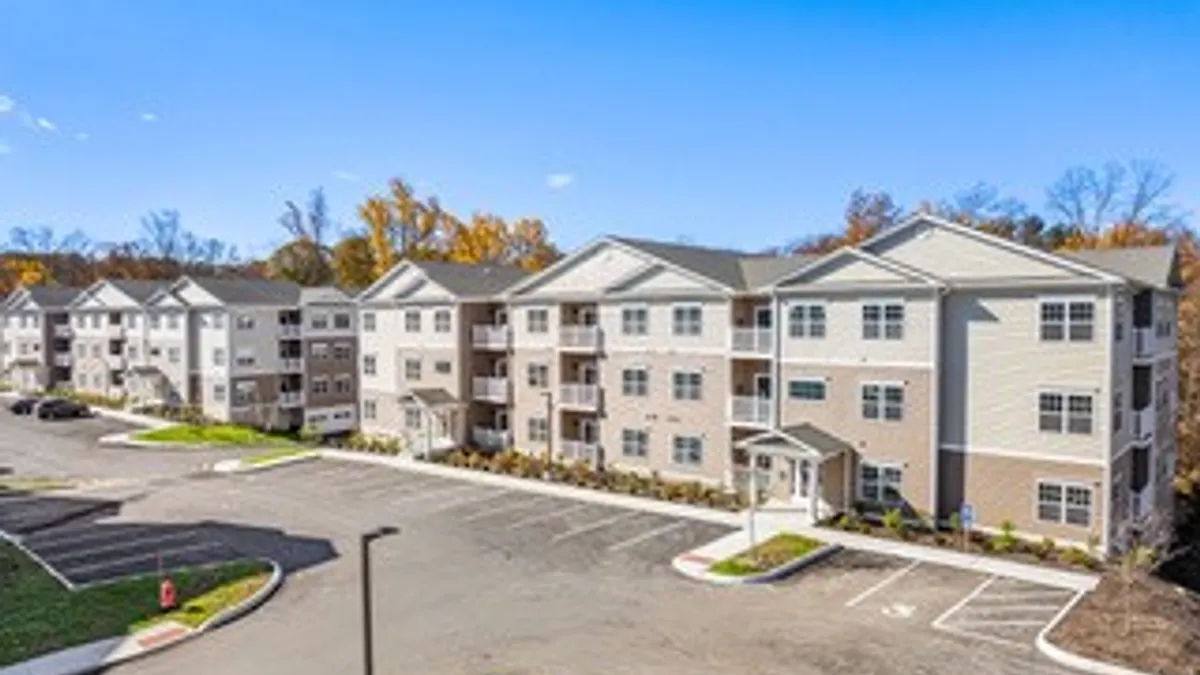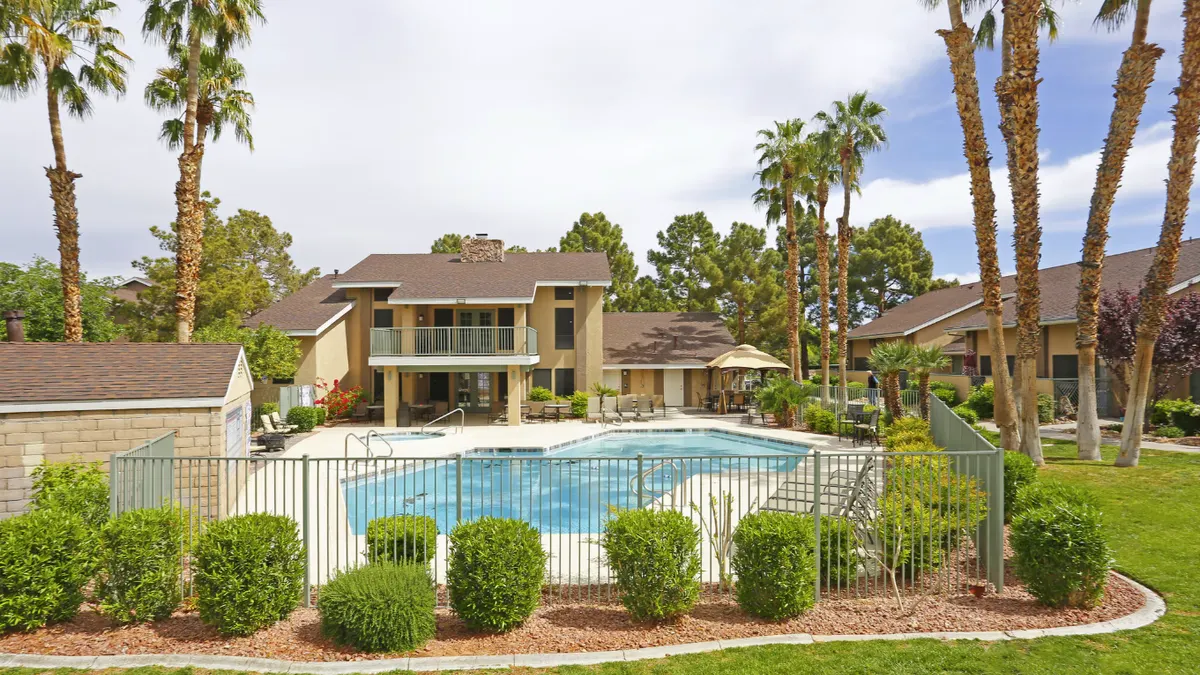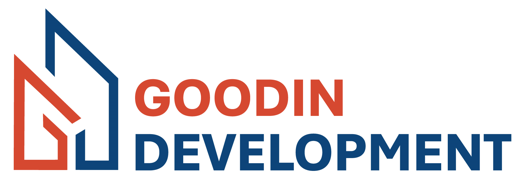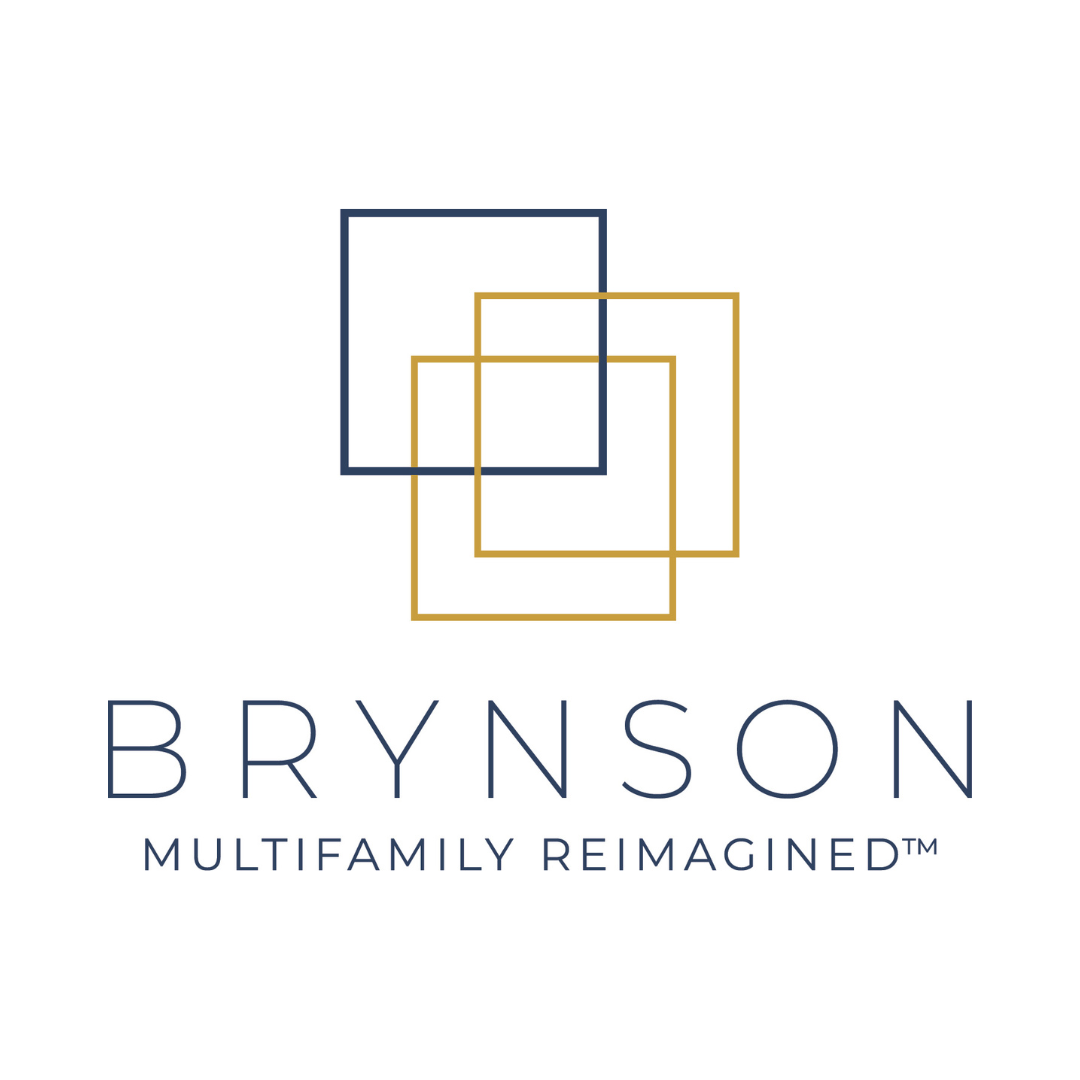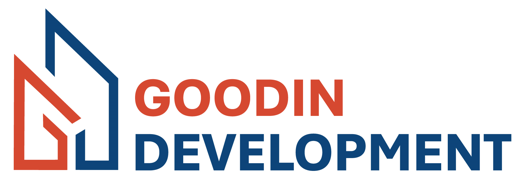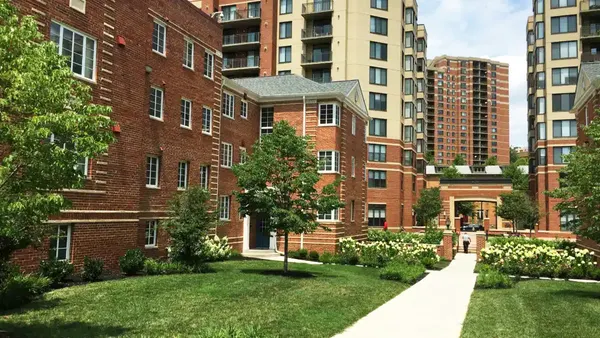Following its bankruptcy filing last year, the 210-unit Covered Bridge complex in Newtown, Connecticut, is now on the market.
The ownership groups — Covered Bridge, Newtown LLC and Covered Bridge, Newtown 1 LLC — has contracted with Keen-Summit Capital Partners, a Melville, New York-based real estate brokerage, workout and investment banking firm, to find a buyer for the property or a provider of joint venture funding or refinancing.
"We are soliciting offers to purchase the property or proposals for an alternative transaction, such as a joint venture or refinance, so our client can assess the best option and present to the bankruptcy court for approval,” Matthew Bordwin, principal and co-president of Keen-Summit Capital Partners, told Multifamily Dive
The Covered Bridge complex was built during the COVID-19 pandemic, which meant the developers had to deal with material delays, inflation and eventually high interest rates, ultimately pushing the project into bankruptcy, according to Bordwin.
“This property, as a standalone real estate investment, is not distressed,” Bordwin said.
The Covered Bridge complex contains seven three-story buildings, each offering a mix of one-, two- and three-bedroom layouts. It has 168 market-rate units and 42 affordable units, restricted to 80% of the area median income, with rents controlled for a period of 30 years. It has a clubhouse with a fitness center, community room and an adjacent pool.
“There are six buildings online, and they've got a high level of occupancy,” Bordwin said. “There's a seventh building that's 80% complete. The issue has been a dispute with a lender, and that's really the basis of what put them in a position where they had to file for bankruptcy because they couldn't refinance.”
Bordwin said he’s seen a number of “flawed capital stack” issues at newer apartment properties that don’t resemble traditional distressed real estate.
“There were a lot of multifamily projects during the pandemic that experienced cost overruns and delays,” Bordwin said. “That, combined with the higher interest rate lending requirements, particularly on new construction, has been a main driver of a lot of the stress that we're seeing in the multifamily sector.”
Click here to sign up to receive multifamily and apartment news like this article in your inbox every weekday.


